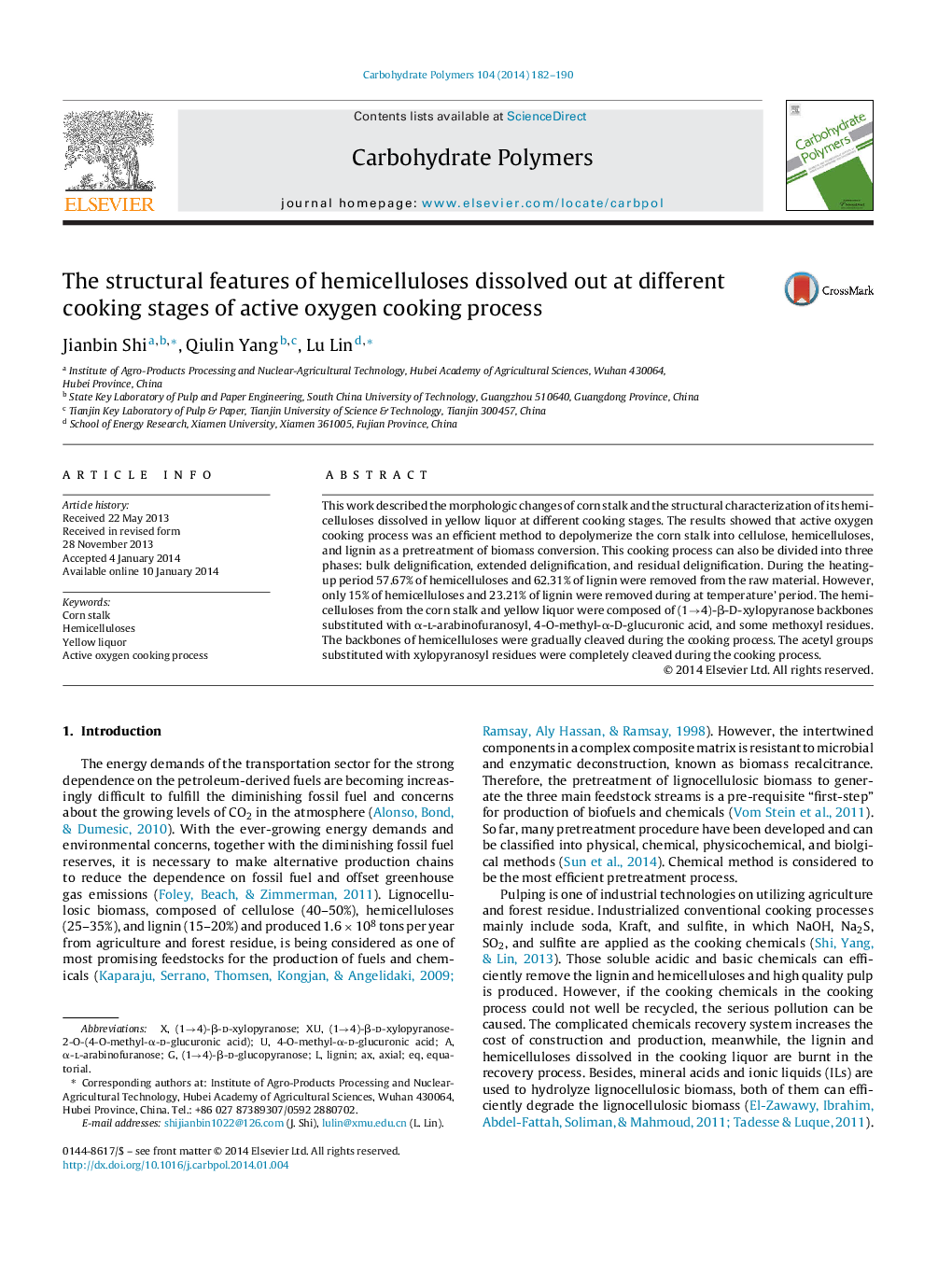| Article ID | Journal | Published Year | Pages | File Type |
|---|---|---|---|---|
| 1375824 | Carbohydrate Polymers | 2014 | 9 Pages |
•Active oxygen cooking process is an efficient pretreatment process for biomass conversion.•Most of lignin and hemicelluloses were removed during the heating up period.•The glucosidic bonds were seriously damaged during the cooking stage.
This work described the morphologic changes of corn stalk and the structural characterization of its hemicelluloses dissolved in yellow liquor at different cooking stages. The results showed that active oxygen cooking process was an efficient method to depolymerize the corn stalk into cellulose, hemicelluloses, and lignin as a pretreatment of biomass conversion. This cooking process can also be divided into three phases: bulk delignification, extended delignification, and residual delignification. During the heating-up period 57.67% of hemicelluloses and 62.31% of lignin were removed from the raw material. However, only 15% of hemicelluloses and 23.21% of lignin were removed during at temperature’ period. The hemicelluloses from the corn stalk and yellow liquor were composed of (1→4)-β-D-xylopyranose backbones substituted with α-l-arabinofuranosyl, 4-O-methyl-α-D-glucuronic acid, and some methoxyl residues. The backbones of hemicelluloses were gradually cleaved during the cooking process. The acetyl groups substituted with xylopyranosyl residues were completely cleaved during the cooking process.
